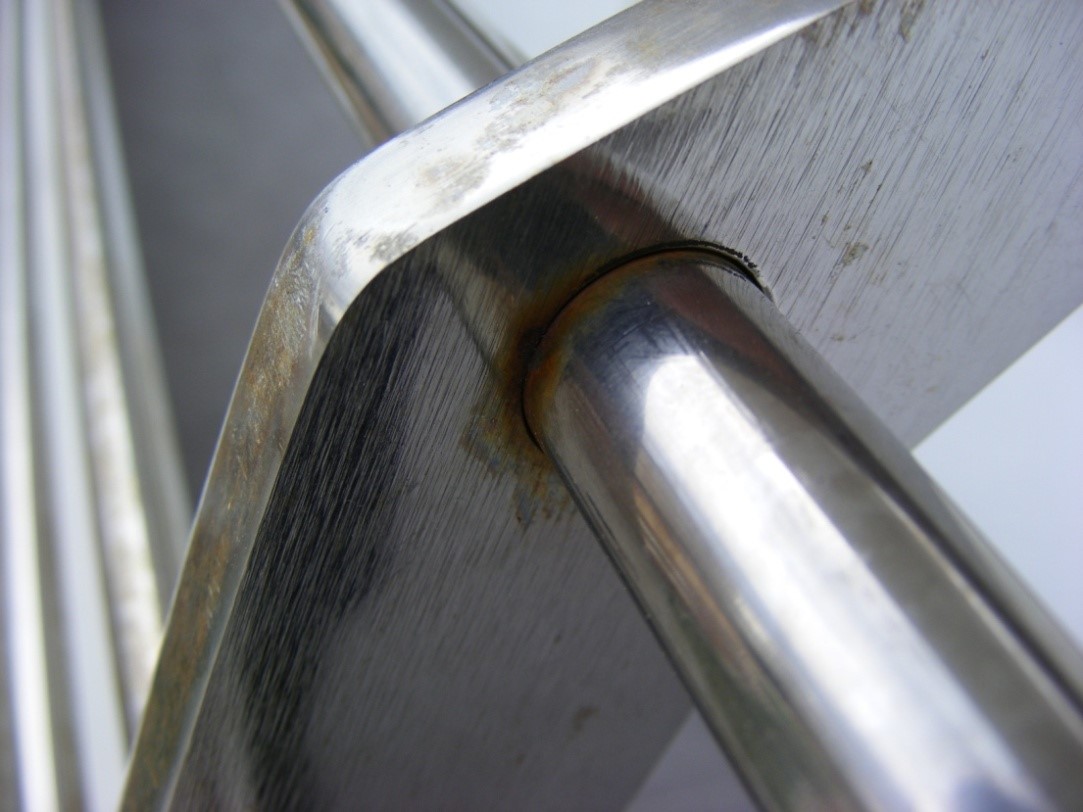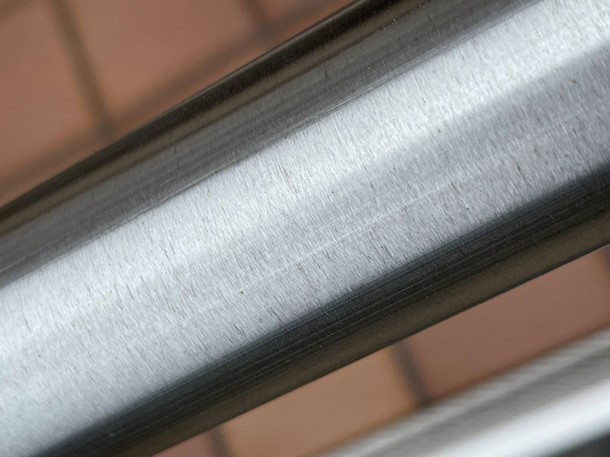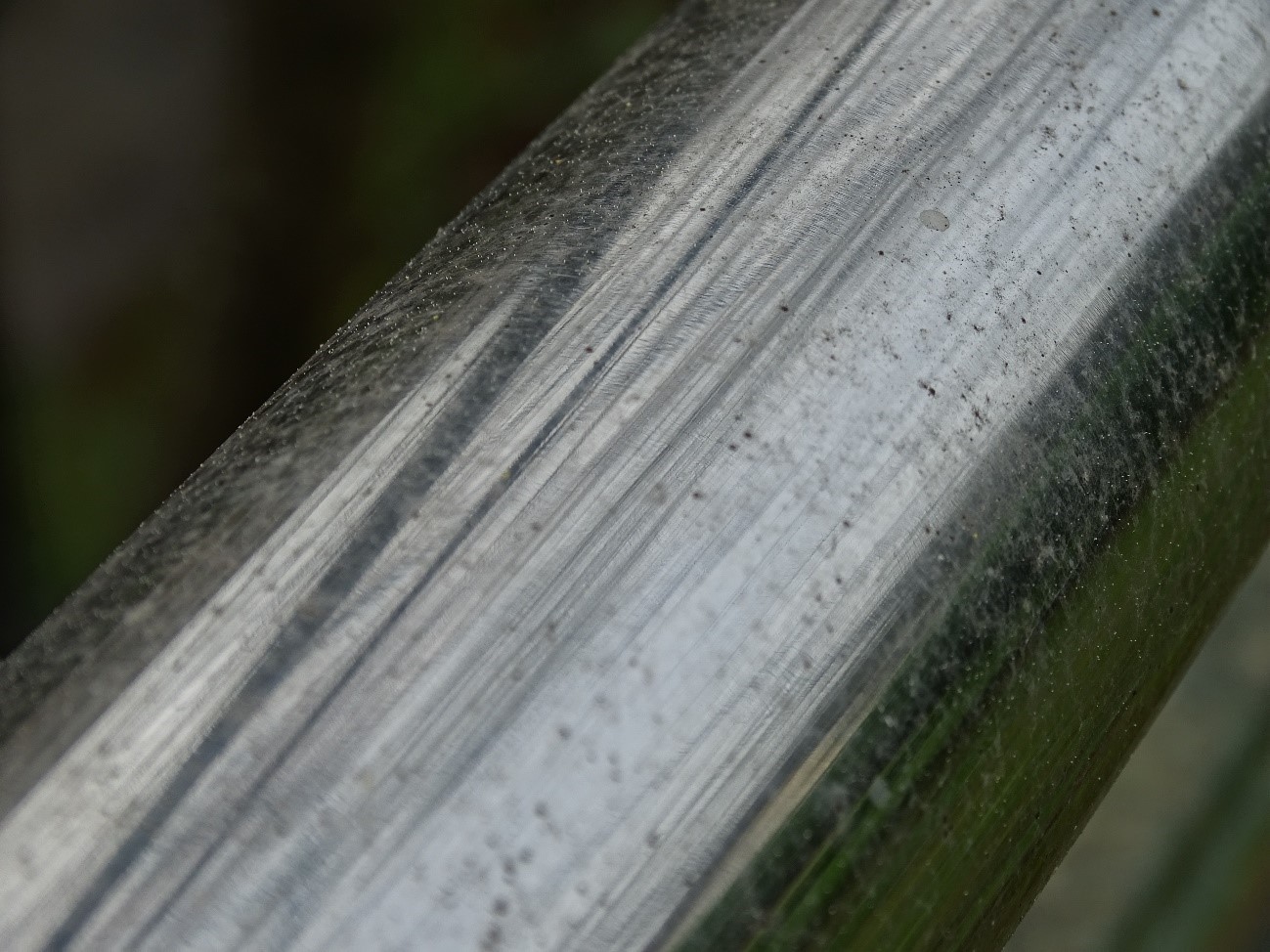-
Tags
Even if most of the failure analysis and studies performed at AZTERLAN Technology Centre are related to an industrial activity, occasionally requests from private citizens are also received. These ones are usually related with complaints regarding premature failure or problems arose due to some missperformant component. However, there is a type of study quite frequently requested by individuals related to the premature deterioration of certain structural elements that have an architectural functionality (such as railings, facade plates, separators, … etc.).
Sometimes the request comes from architects or riggers in charge of newly built facilities and structures that have used this kind of materials and more usually from neighbourhood communities facing reforms on facades where, despite their higher cost, neighbours have decided to replace painted metal structures by stainless steel elements because of their bright aesthetics and the incorruptible character that the name suggests. In these situations, when the material gets deteriorated it is quite usual to see people claiming that stainless steel cannot rust.
In this article, I would like to point out some basic concepts regarding stainless steels and how to prevent problems in this sort of applications.
The nature of stainless steels and their corrosion resistance properties
Despite their name, stainless steels are not noble materials (such as gold or platinum), which are inert to most environments. Stainless steels belong to a family of steels that by introducing certain alloying elements (Cr, Ni and Mo) get their corrosion resistance increased.
Chromium is the main alloying element that provides stainless steels resistance to corrosion. When combined with oxygen a thin film of chromium oxide, which is transparent, adherent, and stable (little soluble) is formed on the surface of the metal. This chromium oxide film acts as a barrier that prevents corrosion progression and thus drastically improves the corrosion resistance of these grades compared to other steel families.
The formation of this layer is known as passivation and occurs spontaneously by exposing the metal to atmospheres with enough oxygen. Surface areas that may be damaged, such as scratches, are also spontaneously self-passivated. Therefore, a fundamental aspect to ensure proper performance of stainless steels is that their surface is exposed to an oxidizing medium that provides the oxygen needed to maintain this passive oxide layer. Stainless steels “must breathe”. For this reason it makes no sense to varnish or to coat stainless steels.
Although this layer remains stable in normal atmospheric conditions and in humid and soft environments some agents can cause a permanent damage of this layer, being chlorine (Cl) one of the most harmful ones. Under these conditions the oxide layer cannot be regenerated and localized wear is produced, causing a rapid deterioration of the components. These deteriorations are known as pitting. This is why chlorinated agents should not be used in the cleaning of any stainless-steel element. Salfuman and bleach, among others, are some very common chlorinated products (must be noted that currently, they play a significant role regarding COVID-19 disinfection procedures).
There are alloying elements that improve or enhance the stability of this layer, which justifies the different corrosion resistance of the different steel grades.
 |
| Gaps between elements or welded joints where a circular weld is not applied throughout the profile are usually common oxidation points. |
AISI 304 or AISI 316?
The steel that is most widely used in indoor and outdoor applications is the grade AISI 304. But this one is not suitable for applications in marine environments because of the presence of Cl- ions. The marine environment, which should be understood as proximity to the coast, promotes exposure to salt crystals transported by water and to marine spray with a high chlorine content. Humidity or drops deposited on the surface of the metal progressively evaporate increasing their aggressiveness due to Cl concentration. This causes the formation of a defect well known, identified as “pitting” (corrosion cavities).
 |
| Balcony railing from an inland town manufactured in AISI 304 grade with a grinding finish (suitable for indoor and low demanding outdoor applications). Periodically cleaned, no sign of deterioration should appear after 5 years of installation. |
Molybdenum alloyed steels such as AISI 316 grade are the only ones suitable for marine environments due to the increased resistance to chlorine pitting. AISI 316 grade contains some more nickel than AISI 304 grade and a 2-3% of molybdenum, which prevents corrosion and improves resistance to this phenomenon in marine environments. The use of AISI 304 steel grade in coastal areas or near marine environment is completely inadvisable.
 |
| Urban handrail in an inland town manufactured in AISI 304 grade with a semi-polished grinding finish. Over 10 years of setting. It shows a characteristic dotting that indicates some sort of contamination by ferrous particles, as well as an incipient fogging that may refer to corrosion due to the lack of maintenance. |
Surface finish and conditions
As noted, the decision on which type of steel is better for an specific application is mainly based on the aggressiveness level of the environment. However, the quality of the surface (finishing) has a significant impact on the corrosion resistance of the material or the component.
The relevance of the surface finish goes far beyond aesthetic considerations. The rougher the surface, the easier pollution sticks on it and the more complicated its cleaning, restricting the ability to self-passivation. Thus, glossy polished surfaces are the best surface finish to develop all the potential for corrosion resistance provided by the alloy.
In the search for a nice matte finish with a dull shine, treatments such as grinding, satin finishing… etc., leave a rough surface with longitudinal grooves. This finishing represents a decisive reduction of the corrosion resistance of the material, making for example an AISI 316 grade steel no longer behave like it should, no matter the aggressiveness of a saline medium for which it had been designed.
Like the surface finish, the surface condition is decisive to ensure that the integrity of stainless steel is prolonged over time. Such aesthetic issues are often a source of controversy, but they play an important role to keep surfaces in good condition and dirt-free so that both the appearance and corrosion resistance are not compromised. In saline environments dirt deposits accumulate and concentrate corrosive agents (Cl). Since they restrict the self-passivating capacity of the metal under the deposit this can cause a common deterioration known as a pitting. This is a corrosion damage associated with dirt.
When presenting a project that has this kind of structural elements on it, it is not common to adequately inform about the need for permanent maintenance work. Nevertheless, lack of maintenance or proper cleaning is usually the most common reason used to justify premature deterioration problems.
Therefore, periodic cleaning is required to keep stainless steel to last over time. This cleaning should be done with soap and water, or using cleaners specifically formulated for stainless steel. As indicated, the cleaners that should never be used for this type of material, are all those that contain chlorides (especially derivatives of HCl) such as bleach or certain silver cleaners.


